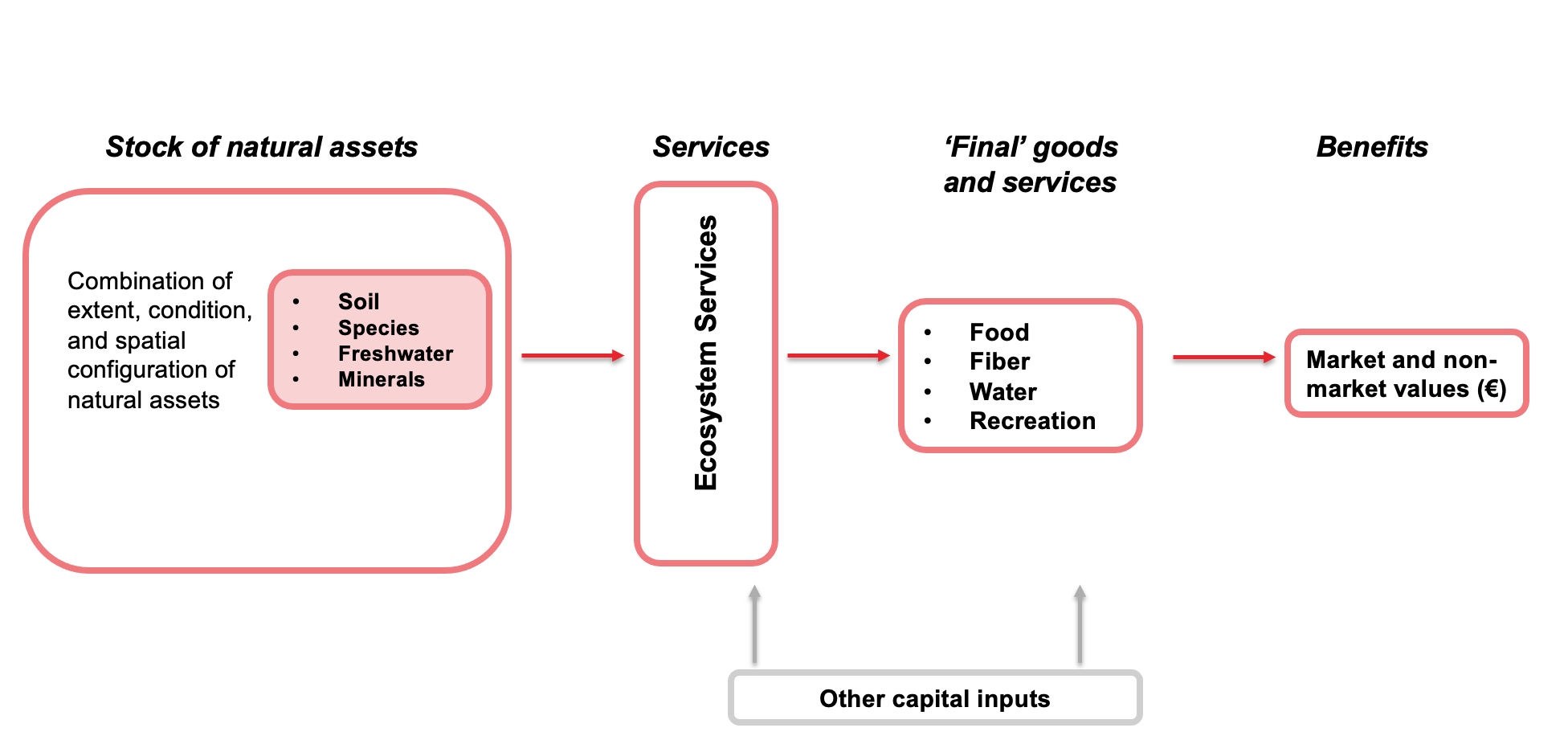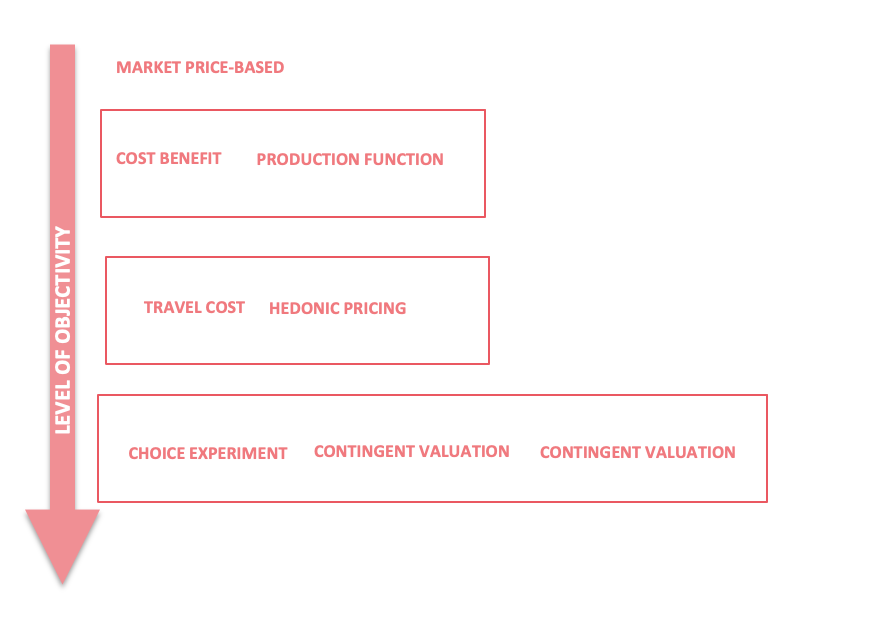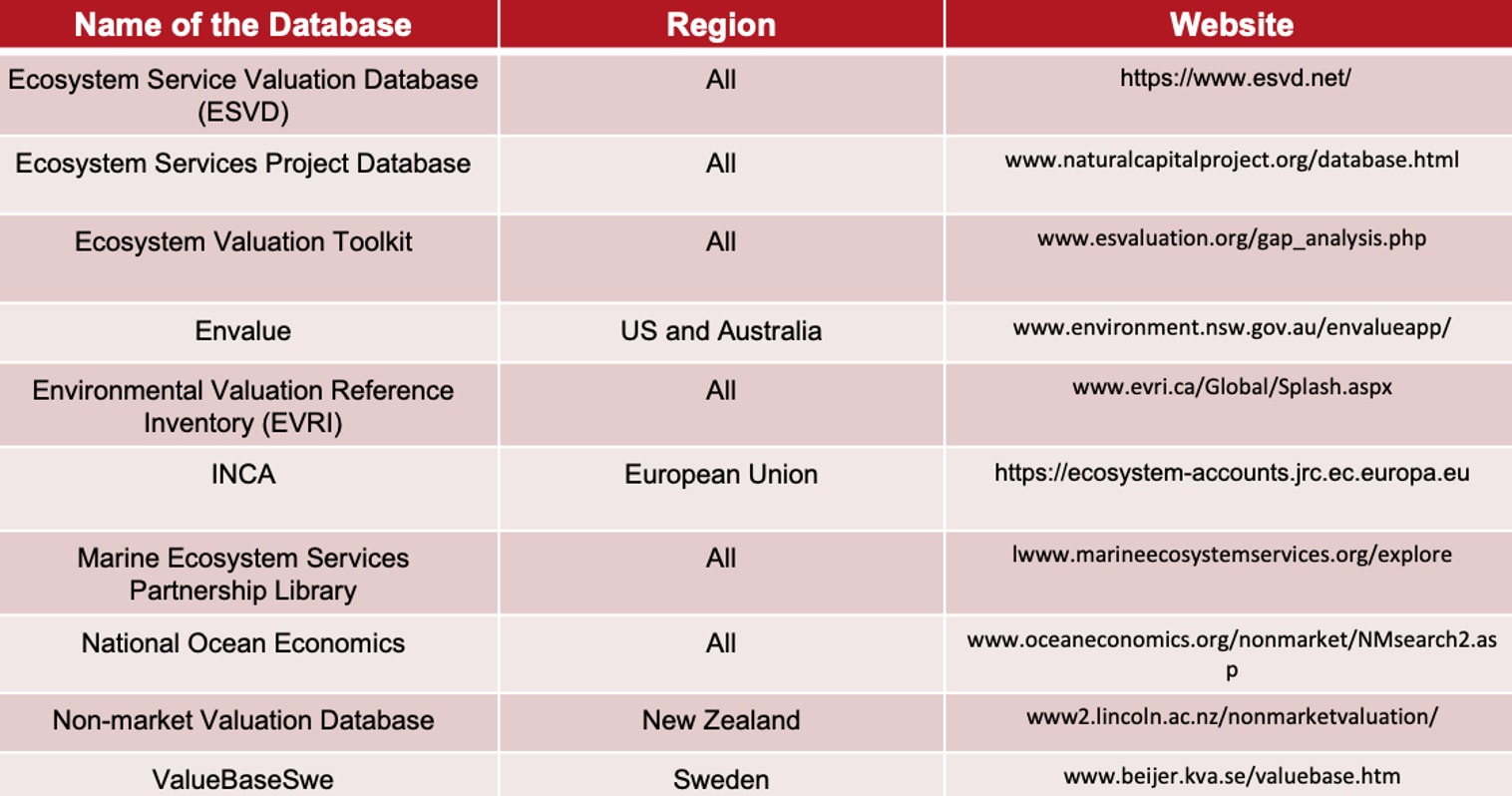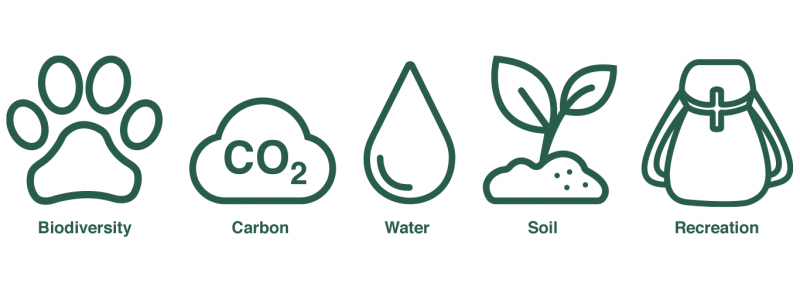The latest findings by the IPCC established that human-induced activities causing the rise in temperature and climate extremes have led to some irreversible impacts as natural and human systems are pushed beyond their ability to adapt. Biodiversity and climate change are inextricably linked, as the loss of the former reduces nature’s ability to absorb greenhouse gases — forests, wetlands and oceans annually absorb 5.6 gigatons of carbon.

The figure above based in PWC’s Final Report on Natural Capital disentangles the stock of elements that form nature. This stock of assets of this type of capital provide a flow of services, this flow represents ES.
Classification
All definitions of ES provided by existing classifications are quite overlapping; hence, we can conclude that ES can be summarized as the benefits/contributions we obtain from nature. The classification that has contributed the most to the standardization of said services is Common International Classification of Ecosystem Services (CICES). The most updated version, CICES V5.1, bases its conceptual framework on the cascade model which aims at retaining the concept of the service to the ecosystem or stock that generates it.
To simplify things, at the highest level this classification groups services in three sections based on their contribution to human well-being support creating a sort of taxonomy. The scheme below represents the classification by CICES the aforementioned taxonomy.
The Valuation of Ecosystem Services
One of the most well-known classifications is that which distinguishes whether the method relies on primary sources, or, on the contrary, it borrows from existing studies . Within the former we distinguish between revealed preference (RP) methods, that resort to market prices to obtain the value, and stated preference (SP) methods, which rely on public surveys. Normally, RP methods are preferred over SP ones as they tend to be more accurate since they derive their values from actual observations. Yet RP is limited in its applicability to certain ES whereas SP methods are much more flexible.
Even though the division of valuation methods by source is commonly used, from a business point of view we consider it much more pragmatic to classify ES valuation methods by the level of objectivity of the method itself. Hence, from our consideration, any ES valuation directly relying on a price in the market determined by those two elements is superior and more reliable than other methods which have to come up with complex methods. The classification below represents how we believe valuation techniques should be classified. The descending arrow represents the loss of objectivity in the methods used.

Market Values or Methods that Rely on them
The first method, the market price-based, uses standard economic techniques to measure the economic benefits of marketed goods, based on the quantity people purchase at different prices and the quantity supply at different prices. This method is the only one that directly relies on market values. Despite the existing flaws related with data availability, the prices of some ES are consolidated in the market with this method. The most straightforward example would be that of carbon markets.
Descending into the arrow of the figure above, we find methods that do not directly use market prices for their valuation but make use of them for the creation of ES values. The cost-based (CB) method assumes that the value of ES can be defined at least as the costs that are avoided because of the existence of ES. More concretely, it bases its approach on calculating the costs that would be incurred had the ES not been there. There exist different techniques within this method, mainly depending on the purpose of the valuation. For instance, when an ES has been degraded cost-based methods can be applied to calculate restoration costs. This is the case of the study conducted by Kuhlman et al. (2010), in which the annual amount of soil degradation in Europe is calculated in order to estimate the differences between the costs and the benefits that soil restoration practices would imply for farmers.
Lastly, the production function (PF) method calculates how much a given ES contributes to the delivery of another service or commodity which is traded on an existing market. This method is applied in cases in which the ES is used, along with other inputs, to the production of a marketable good. Take, for instance, the study conducted by Marnasidis et al. (2021) , which attempts to estimate the role of the pollination ES done by honeybees in the food crops in Pella, Greece.
Existing Value Databases



